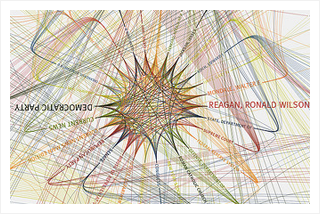I put together this data visualization based on the World Development Indicators dataset on Google (Public Data Explorer) and it shows how many days it takes to start a business in Brazil, Russia, India, and China compared with Canada. You can see how dramatically India has dropped the start-up time period and how Canada has managed to increase the time period from three days to five days. At least one story in these data is the relative ease we have in starting up a new enterprise. While the red tape challenge certainly exists in Canada, it can be worse elsewhere. These statistics don’t speak to effectiveness, unregistered businesses, or other significant factors. I could have chosen any number of countries, comparisons, and representations.
The most critical aspect of this project is the platform that Google has created with Public Data Explorer. You can pick from many public datasets, explore each of them visually, and then share the link or embed it for others to see and use. With the massive sea of data that grows by leaps every day, people who create the platforms for the exploration and communication of this information will be able to leverage those data for various kinds of influence. The use of data will be a key feature of storytelling as time goes on. The great storytellers will be driven by the usual aspects of narrative communication, but data visualization will become a very substantial part of that toolkit. Think tanks, universities, NGOs, government departments, corporations, and other organizations dependent on information need to think not only about individual datasets but about the platforms that will make that information sensible, customizable, explorable, and thus powerful.
Here is an example of global homicide rates. I have selected for representation the highest, lowest, Canada/U.S., and a few others. The output on this is for 2008 represented as a bar graph.
Access like this changes the dynamics of research and puts into the hands of anyone with an internet connection capabilities that were once the purview of advanced researchers and firms. What happens when not only the data but also the means to explore and communicate those data meaningfully is placed into the public domain in a much more accessible way than ever before? Who will sort and review and ensure that the stories being told from those data are in fact substantive and credible? This feels a bit like what happened when music moved from the control of the big labels out into a much more public and shareable space. Data journalism is a growing field that is worth paying attention to.
This recent article from Forbesprovides a good overview with great links for further investigation.





 On my visit to Seattle last month, I visited the office of data visualization company
On my visit to Seattle last month, I visited the office of data visualization company